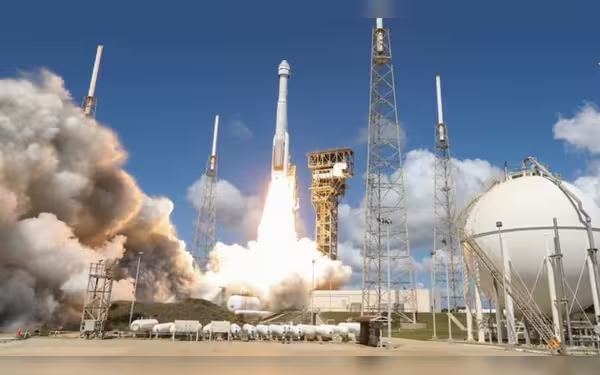Tuesday, July 2, 2024 03:49 PM
NASA and Boeing face delays in Starliner spacecraft return
- Starliner's return rescheduled to June 18 due to technical issues
- Challenges include faulty components, weather monitoring, and coordination with ISS
- NASA and Boeing working to ensure safe return for astronauts
 Image Credits: channelnewsasia
Image Credits: channelnewsasiaNASA and Boeing encounter delays in Starliner spacecraft return from ISS, addressing technical issues for a safe journey back to Earth.
NASA and Boeing have announced a delay in the return of the Starliner spacecraft and its first astronaut crew from the International Space Station. Originally scheduled for June 14, the return is now expected on June 18 as mission analysts address issues that could impact the spacecraft's journey back to Earth.
The CST-100 Starliner spacecraft, developed by Boeing, was set to undock from the ISS on June 14 after launching two NASA astronauts on June 5. This mission is a critical test before Starliner can be approved for regular flights. The rescheduling of Starliner's return involves considerations such as resolving faulty components, monitoring weather conditions, and coordinating with ISS activities like spacewalks.
NASA officials are aiming for Starliner to undock from the station on June 18 and land in designated locations like the White Sands Missile Range in New Mexico or Willcox Playa in Arizona, depending on weather conditions. Recent issues detected on Starliner include a problematic oxidizer valve and a helium leak in the propulsion system, in addition to thruster malfunctions during its journey to the ISS.
Despite these challenges, NASA and Boeing managed to restore most of the thrusters before docking with the space station. Starliner is permitted to remain docked to the ISS for up to 45 days, as per NASA officials.
The delay in the return of the Starliner spacecraft highlights the complexities and challenges of space travel. NASA and Boeing are working diligently to address the issues and ensure a safe return for the astronauts aboard. This mission serves as a crucial step in the development of commercial spaceflight capabilities, paving the way for future missions to the ISS and beyond.













